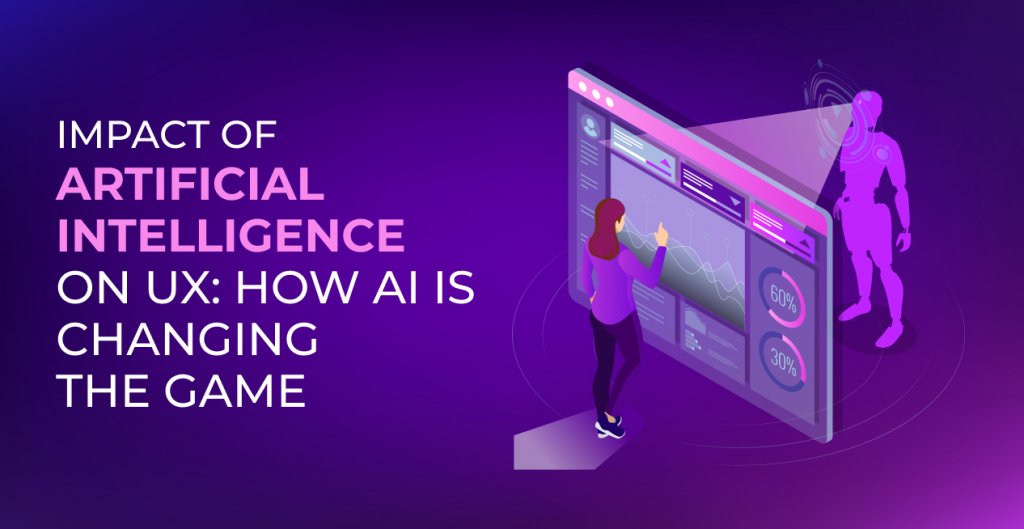Artificial Intelligence (AI) has revolutionized the way we interact with technology and live our lives. It is predicted that AI will be widely used in almost every industry by 2028, including UX. The AI-driven UX design has the potential to revolutionize the way products and services are created and designed. In order to improve the overall user experience, designers need to understand the ways in which AI can enhance user experience. Artificial Intelligence will be crucial in user experience design for a number of reasons. First, it can ensure that brand image and design aspects are consistent. Second, AI can help humans comprehend interfaces better, and third, it can help efficiently and swiftly compile user feedback for ongoing improvements.
In this article, we’ll discuss what Artificial Intelligence (AI) and User Experience (UX) is and the impact of Artificial Intelligence on UX.
What is User Experience (UX)?
A User Experience can be defined as the feeling that the user experiences while using a product, app, system, or service. Generally, it refers to how easy it is for users to navigate a product, how relevant the content is displayed, etc.
The User Experience (UX) of a product refers to the holistic journey users take while using it. It includes both their direct interactions with the product as well as how it fits into their overall process of completing tasks. From the user’s perspective, the entire experience is considered a part of UX, regardless of whether the product directly controls it or not. The User Experience includes every touch point between the company and its customers.
What is Artificial Intelligence (AI)?
Artificial Intelligence is a set of technologies that empower computers to perform advanced functions, including the ability to understand spoken and written languages, analyze data, and make recommendations.
The concept of AI is the ability of a computer, a robot controlled by a computer, or a software program to think intelligently as if it were a human. In Artificial Intelligence, patterns of the human brain are studied, and cognitive processes are analyzed. As a result of these studies, intelligent software and systems are built.
For example, Tesla uses Artificial Intelligence to make its self-driving cars capable of navigating roads, highways, and parking lots without human intervention.
Impact of Artificial Intelligence on UX
Enhancing the user experience is now possible, thanks to innovations in Artificial Intelligence and Machine Learning. To improve user and consumer experiences, AI developers will collaborate with UX designers in various ways. Let’s explore some of the examples of Artificial Intelligence’s impact on UX.
1. Personalized user experience
Personalization is one of the most significant impacts of AI on UX. Designers may utilize AI to build personalized user experiences based on each user’s individual preferences and behaviors. A news app might use AI to build a unique news feed for each user, while a music streaming service might use AI to suggest songs to a user based on their listening history. Users who feel that a product or service is specifically catered to their requirements and interests are more likely to engage with it and be satisfied.
2. Automated design
There are a lot of repetitive, unimportant tasks that need to be completed, but doing so requires human attention. Image cropping, color correction, and image scaling are a few examples of the kinds of jobs that Artificial Intelligence can automate. AI developers have created sophisticated technological solutions that can complete all of these tasks without the involvement of any humans. As an example, Adobe’s stitch feature is capable of recognizing patterns in photographs and assisting designers in combining them.
3. Smart design systems
A design system provides patterns, modules, and elements that understand the design language of a product or brand. UX designers can use design systems created by Salesforce, GE, Airbnb, Google, and others to provide a consistent, well-designed user interface. Integrating Artificial Intelligence into these systems helps product teams understand how each individual user interacts with the elements of a user interface. As a result, Artificial Intelligence can transform a normal design system into a smart one.
4. Predictive analytics
Predictive analytics is another way AI may improve user experience. With the help of AI, you can forecast which users will use and which will delete your app using predictive analysis. With the use of this information, UX designers may develop specialized designs and focused interventions to stop users from deleting your app. Algorithms can be used by AI systems to analyze user data and forecast what the users of an application will do or want next. As a result, UX designers are better able to foresee these evolving needs and create interfaces that are more responsive.
Can Artificial Intelligence replace UX designers?
The goal of Artificial Intelligence is to assist people in managing their tasks and business or personal needs. UX designers can save time and effort by using it to design individualized customer experiences. UX designers cannot be replaced by AI since it is still in the learning stage of development. The ever-evolving capabilities of AI, however, suggest that their role may change in the future. UX designers are using AI today to reduce repetitive work and discover user insights, among other tasks.
For UX designers, AI could do more complex work and generate perfect code in the future. Despite this, Artificial Intelligence will not replace UX designers.
Conclusion
The impact of AI on UX design is substantial overall and is expected to increase over the next few years. As growing businesses use AI to power their processes, it is becoming more relevant and accessible. AI is still way off from widespread use, mainly due to its limited availability and high cost. Designers can create more logical and effective designs that enhance the user experience by understanding how AI can improve the user experience. However, it is crucial for designers to consider the ethical consequences of utilizing AI and to make sure that technology is used in a simple and user-friendly manner.
